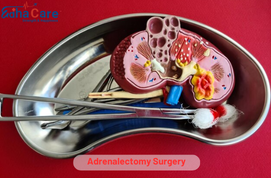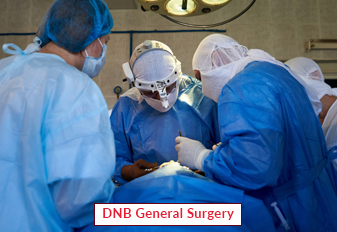Adrenalectomy Surgery

Adrenalectomy-Surgery is a surgical process to remove one or both adrenal glands. These glands are located on each kidney and provide hormones needed for metabolism, immune function, blood pressure, and other vital bodily functions Adrenal tumors (negative or malignant), and adrenal hyperactivity (such as Cushing syndrome, Kahn syndrome, or pheochromocytoma), or adrenal gland metastasis (involving cancer in multiple other organs) can be operated by adrenalectomy surgery. It can be performed with less invasive techniques (laparoscopic or robot-assisted) or with conventional open surgery, depending on the patient of the condition and at the discretion of the surgeon.
About Adrenalectomy Surgery
Before performing the adrenalectomy procedure, the patient undergoes physical examinations including blood tests, imaging studies such as CT scans or MRIs, and sometimes hormonal tests to determine the status of the adrenal gland. On the day of surgery, the patient is rendered unconscious under general anesthesia. The surgeon uses endoscopic instruments or performs traditional open surgery, cutting through the abdomen or pelvis and removing the adrenal gland. There are some complications associated with Adrenalectomy surgery; they can include bleeding, infection, organ adjacent damage, or reaction to anesthesia. Some patients experience brief periods of weakness, fatigue, or pain after surgery, but these are usually temporary and subside over time. While the Adrenalectomy procedure has been done some patients experience improved symptoms after adrenal resection, including removal of cancerous tumors that prevent further expansion, regulation of hormone levels in hyperactive adrenal glands such as Cushing syndrome or Conn's syndrome, also control the blood pressure in case of pheochromocytoma, relief of symptoms in metastasis of adrenal gland. Overall, adrenalectomy can improve patients’ quality of life and health outcomes, although individuals vary, and prognosis depends on the patient’s general health and underlying conditions.
Procedure of Adrenalectomy Surgery
1. The manner of adrenal resection includes several steps. First, the affected person undergoes a radical preoperative evaluation, which incorporates a physical exam, blood assessments, imaging studies (which includes a CT experiment or mris), and once in a while hormones examination to evaluate the adrenal gland and surrounding structures
2. Before the surgical Adrenalectomy procedure, patients are frequently informed to comply with unique preoperative commands, which may additionally consist of a particular duration of fasting before the surgical operation, discontinuation of positive medications that could intervene with surgery or recovery, and after the availability of water and well-known fitness care
3. On the day of the Adrenalectomy surgical operation, the patient is admitted to the medical institution and organized for surgical treatment. This includes administering anesthesia to calm the infection and make certain that the patient remains pain-free during surgery.
4. The healthcare professional then performs the adrenal resection using much less invasive strategies (which includes laparoscopy or robot-assisted surgery) or conventional open surgical treatment, relying on the patient’s condition and different factors Laparoscopic or robotic-assisted surgery includes small incisions within the stomach Special gear are insertion of a small camera to visualize the adrenal gland and removal In open surgery, a bigger incision is made to get admission to the adrenal gland directly.
5. After the Adrenalectomy surgery, the affected person is carefully monitored in cushy surroundings before being transferred to a sanatorium room. Postoperative care consists of pain control, control of complications inclusive of bleeding or infection, and gradual reintroduction of allowable ingredients and fluids often patients are endorsed to mobilize right now after surgery to sell recovery and save complications along with bleeding.
6. follow-up care includes regular appointments with the surgeon and other healthcare providers to monitor recovery, manage any ongoing symptoms or complications, and adjust medications or other treatments as needed. physical activity may be restricted temporarily, and patients are advised to follow specific guidelines for resuming normal activities and returning to work or another daily routine.
Require Assistance?
Get A Quick Callback From Our Healthcare Experts






